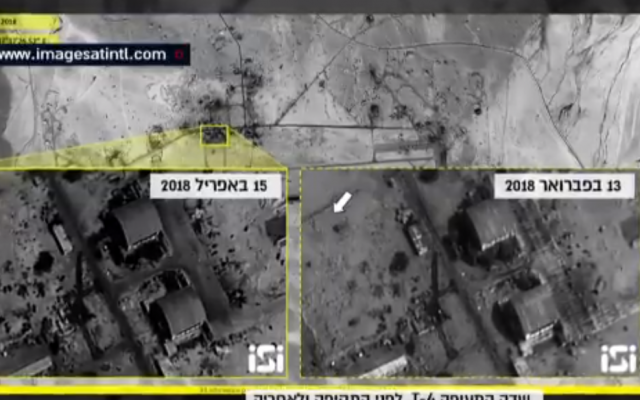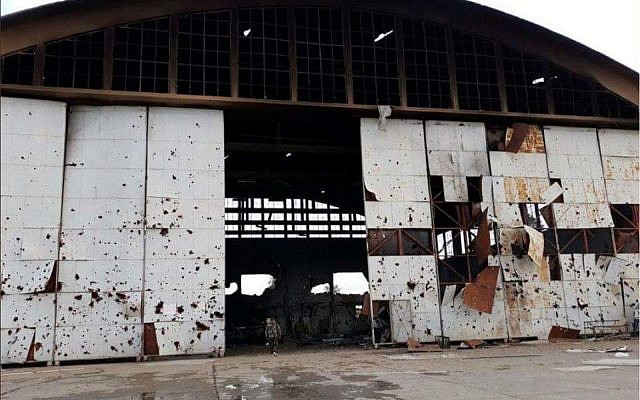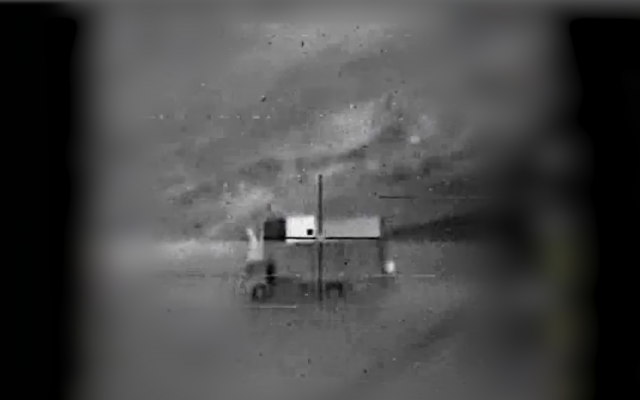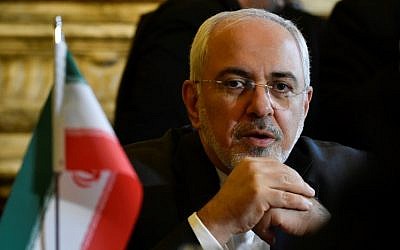Iran and Russia have blamed Israel for the strike, which Israel has not confirmed; report says attack was limited to arsenal of Iranian weapons stored at T-4

Satellite images taken before and after a raid on an Iranian military facility in Syria earlier this month reveal the precision and limited scope of the airstrikes, Channel 10 reported Sunday.
The images obtained by the channel show the charred remains of a single hangar at the Tiyas airbase, with the surrounding area relatively unaffected.
Iran, Syria, Russia, and some US officials have all said that Israel was responsible for the strike on the base, also known as T-4. Israel has not commented.
According to the TV report, the pre-dawn rain on April 9 attack was carried out with “surgical precision,” and was limited to the arsenal of Iranian weapons stored at the airbase outside the city of Palmyra.
“[The raid] was a barrage of small explosives designed to destroy the contents of the hanger, but not damage unintended targets,” Channel 10 said.
The April 9 strike killed 14 people, including at least seven members of the Revolutionary Guards, of which one was the head of its drone program, Col. Mehdi Dehghan.

The strikes did not appear to target Russian military equipment or Syrian anti-aircraft systems that were also at Tiyas.
This was the second time the base was struck. Israel acknowledged hitting the base in February after Iran flew an explosive-laden drone into Israel. Israel says the drone was launched from the base.
The IDF said in February that it bombed “four Iranian targets that are part of Iran’s military establishment in Syria.”
This included a mobile command center on the T-4 military, from which an Iranian operator allegedly flew the drone that entered Israeli territory, according to the IDF.

One F-16 fighter jet was hit while flying over Syria during the raid, but managed to return to Israel, where its two pilots bailed out of the plane, which crashed into a field in the Jezreel Valley.
In response to the downing of the F-16, the Israeli military conducted another round of strikes, specifically targeting Syrian air defense systems. Then too, Israeli pilots faced significant Syrian anti-aircraft fire, set off multiple warning sirens in northern Israel, sending residents into bomb shelters.
Earlier on Sunday, Iranian Foreign Minister Mohammad Javad Zarif accused Israel of escalating tensions in Syria by “routinely” violating its territory.
“I do not believe that we are headed towards regional war, but I do believe that, unfortunately, Israel has continued its violations with international law, hoping to be able to do it with impunity because of the US support and trying to find smokescreens to hide behind,” Zarif told “Face the Nation.”
“And I do not believe that the smokescreens work anymore,” he said.

Zarif went on to accuse Israel of escalating tensions in Syria by “routinely” violating its territory, referring to two recent alleged Israeli strikes on a regime military target used by the Revolutionary Guards to launch an explosives-laden drone inside Israeli territory earlier this year.
Prime Minister Benjamin Netanyahu later made plain that he did not believe the “moderate” remarks made by Iran’s foreign minister, and warned there was a “huge gap” between Mohammad Javad Zarif’s comments in a US TV interview and the military aggression of Iran’s Revolutionary Guards, which was “advancing an army against Israel.”
“I heard the remarks of the Iranian foreign minister, who accuses Israel of violating international law,” Netanyahu said at an Independence Day event in Tel Aviv with the IDF General Staff. “He is the foreign minister of a country that deploys armed drones to Israel and missiles to Saudi Arabia.”
“I also heard his moderate remarks, and there is a huge gap between his words and the actions of the Revolutionary Guards, who are advancing an army against Israel with the stated aim of destroying Israel,” Netanyahu said. “I’m unimpressed by his remarks.”
As reported by The Times of Israel
